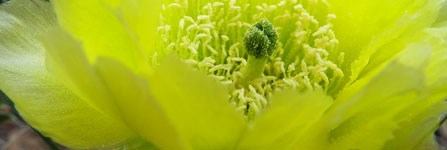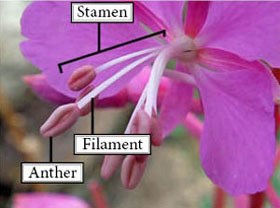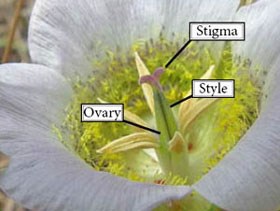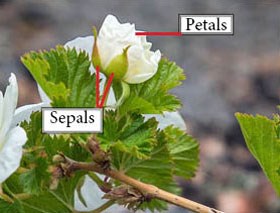
NPS photo by D. Pinigis
The park supports more than 1,000 species of flowering plants. Some are large and some are very tiny, but all these flowers have several things in common. They are all members of the Kingdom Plantae (plants), Division Magnoliophyta, which includes all flowering plants.
Flowers are the reproductive structures of flowering plants, and plants invest a considerable amount of energy to produce an extravagant variety of flower features. Flower anatomy consists of four main structures – pistils, stamens, petals, and sepals – all of which contribute to reproduction. Observing the number, shape, color and arrangement of these structures will help in wildflower identification and enhance your enjoyment of the park's bountiful display of wildflowers.

NPS photo by D. Pinigis 
NPS photo by D. Pinigis 
NPS photo by J. Westfall Surrounding the petals are the sepals. Sepals often appear as green leaves, but may also be brilliantly colored (they are the blue structures of the Colorado blue columbine) or appear identical to petals (such as in white marsh marigold). Sepals provide protection to inner flower structures during bud formation and during storms or at night when the flowers of some species will close.
Next time you are hiking grab a hand lens and wildflower guidebook and observe the seemingly endless variety of colors, shapes, and arrangements of park wildflowers. Spend time perched next to a wildflower and notice the pollinators who come to visit and the tiny dramas occurring within the petals.
|
Last updated: February 24, 2015
